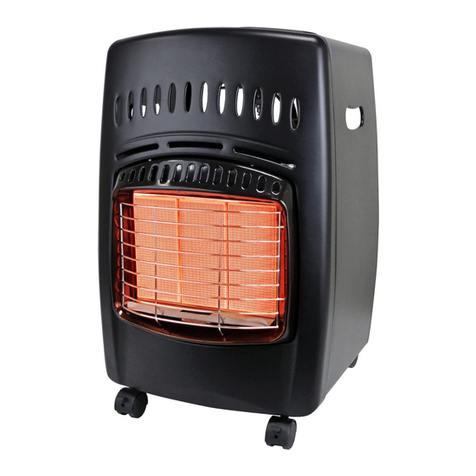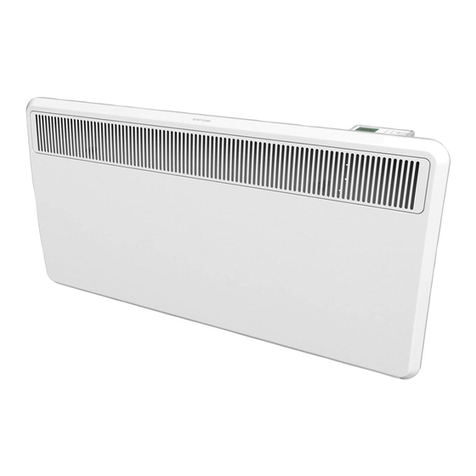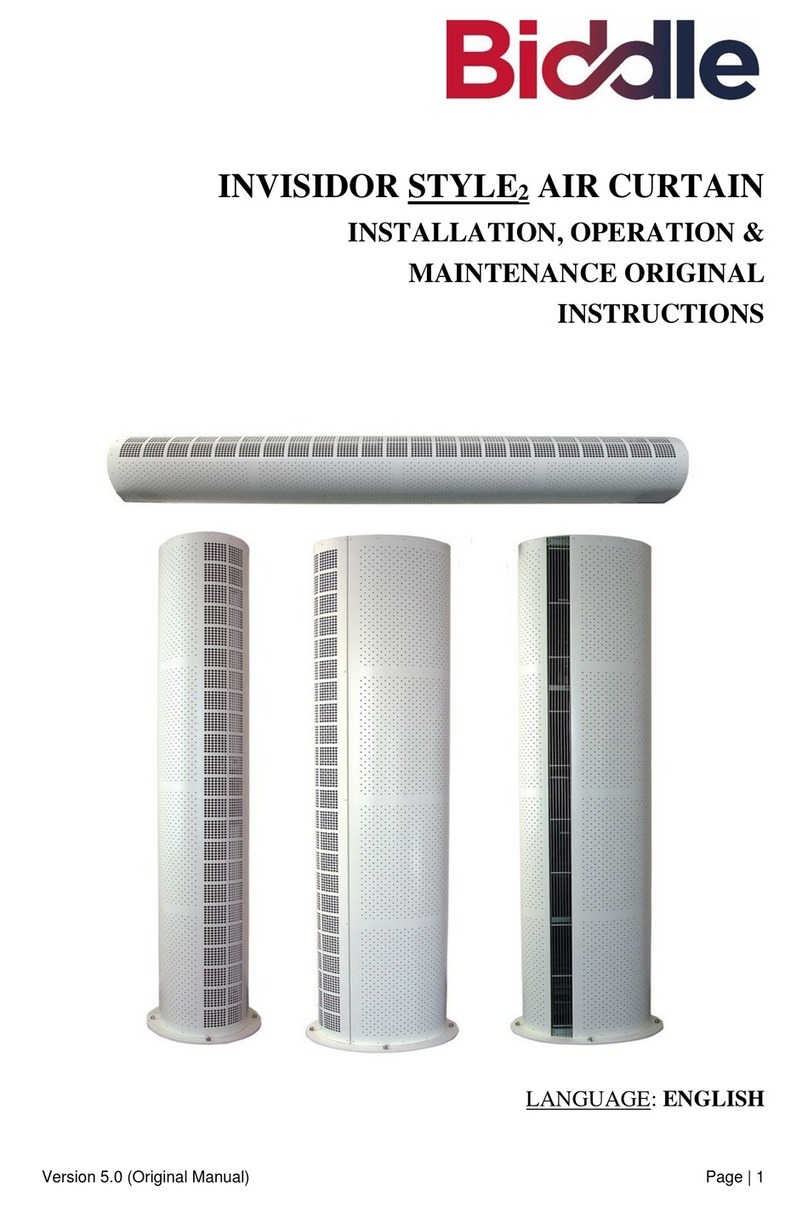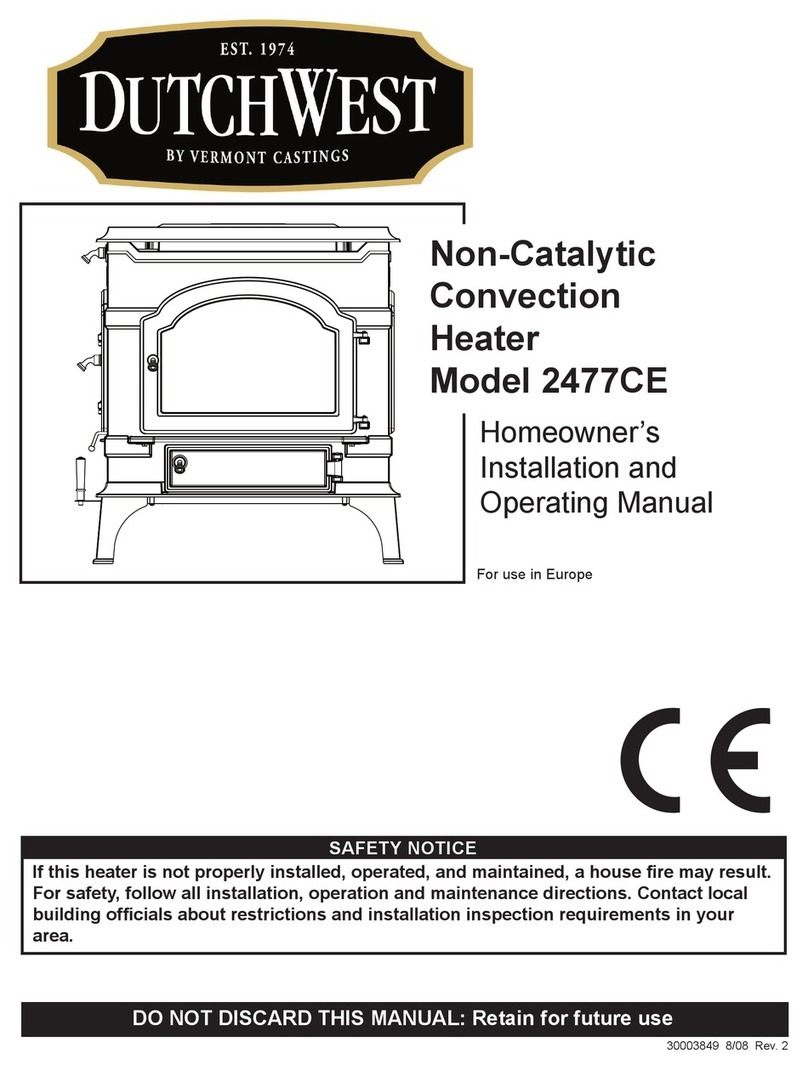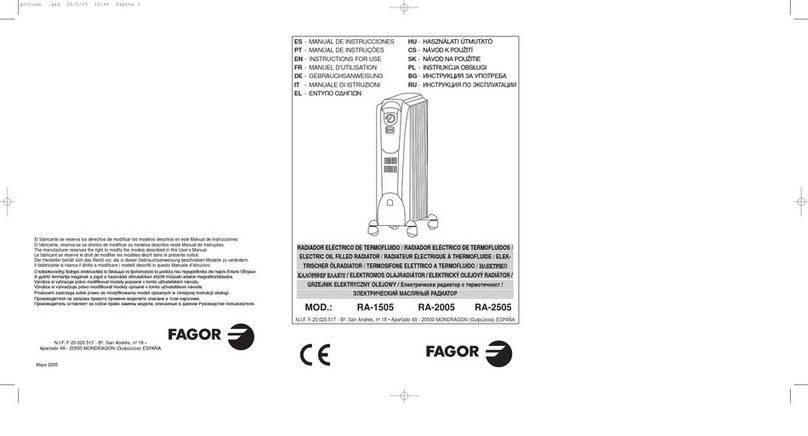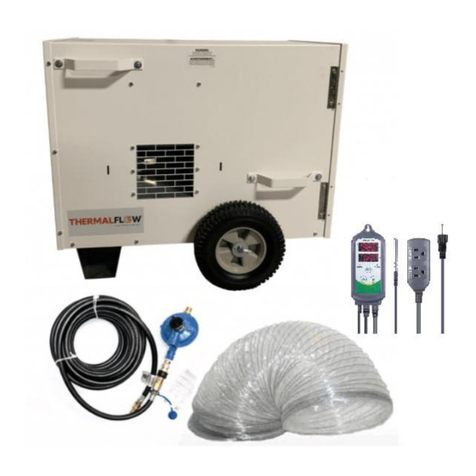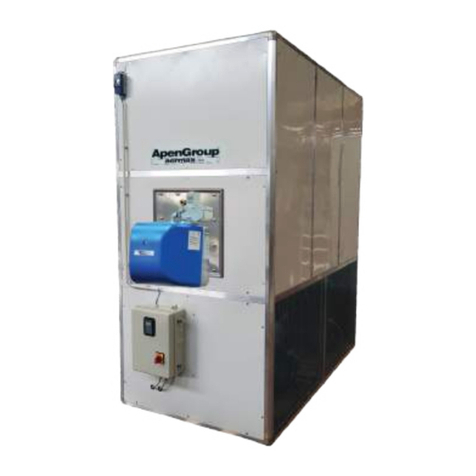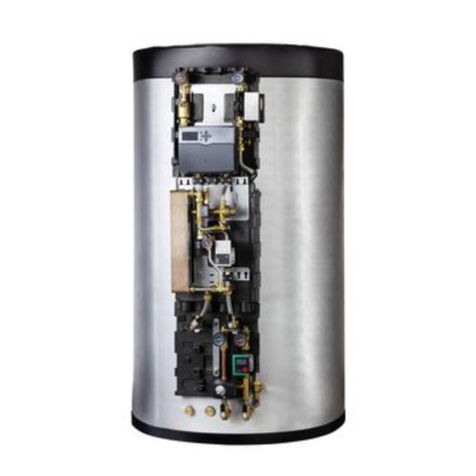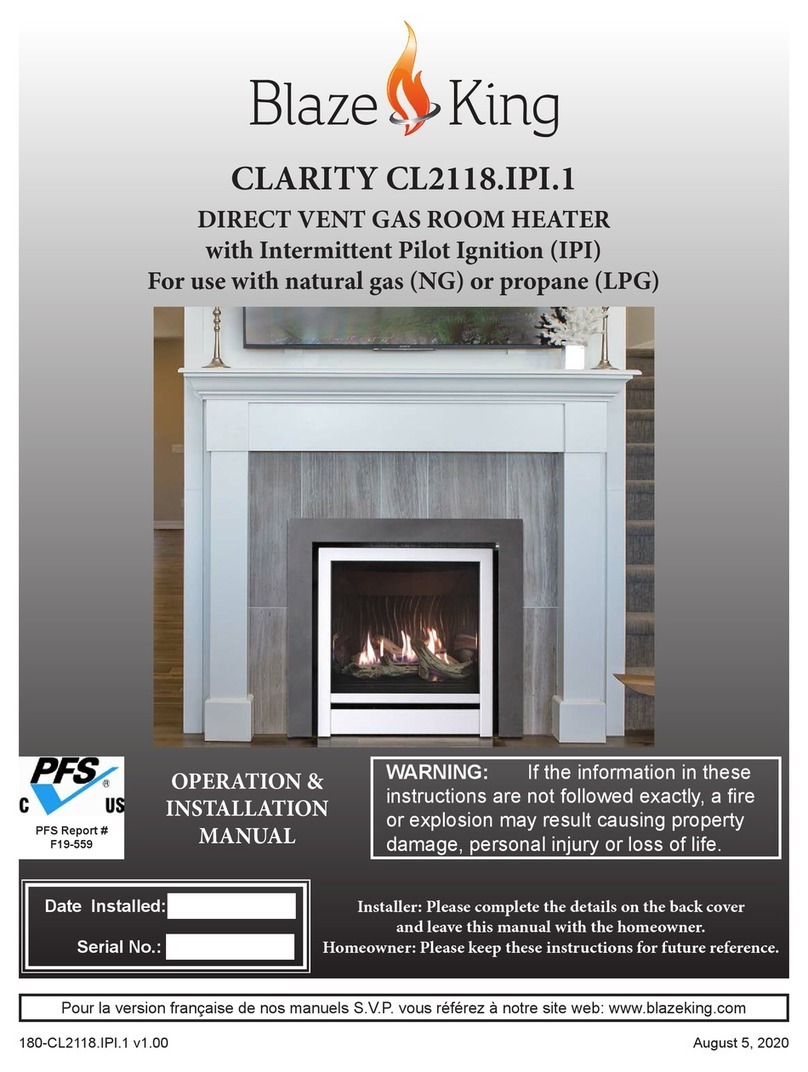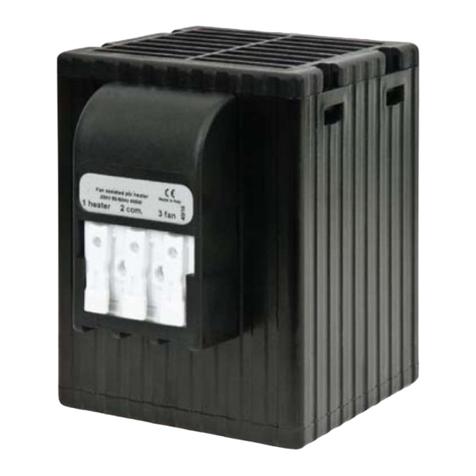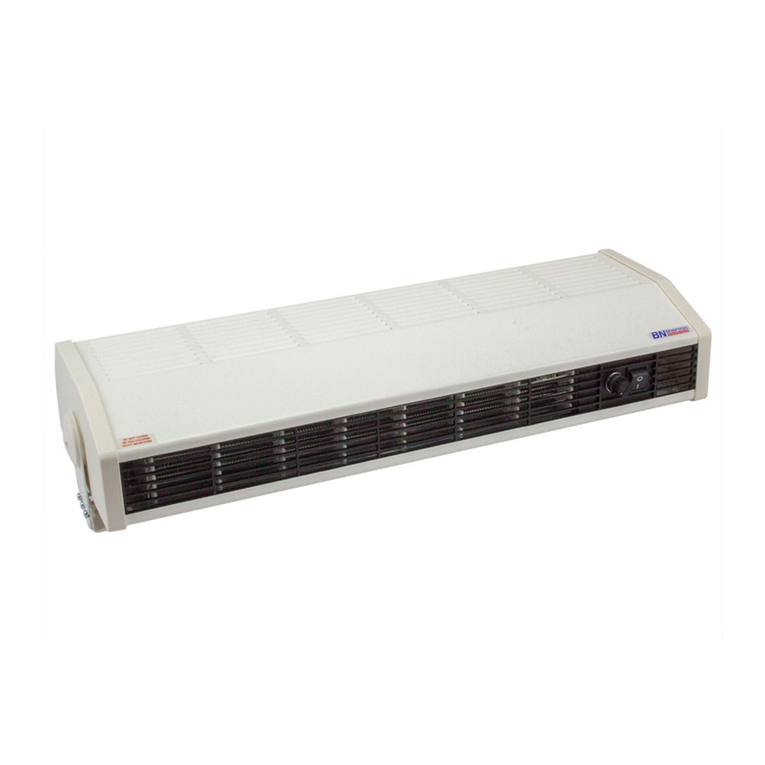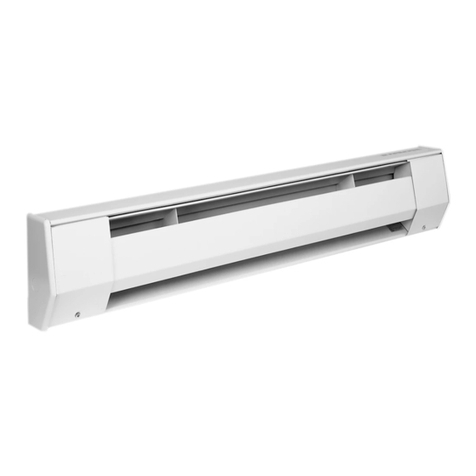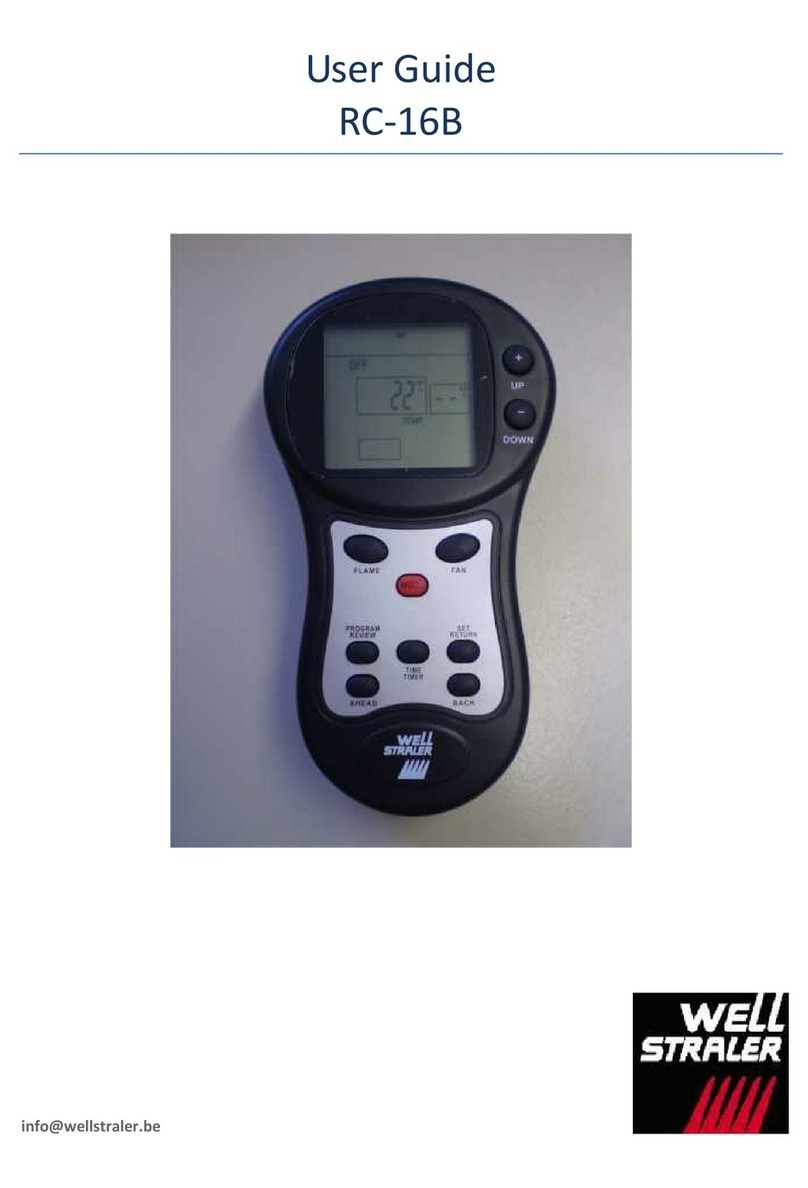10 15
SERVICE HINTS
Do not expect a heater to draw. It is the
chimney that creates the draft. Smoke
spillage into the house or excessive
build-up of water or creosote in the
chimneyare warnings that the chimney
is not functioning properly. Possible
causes are:
1. Theconnection pipe maybepushed
into the chimney too far, stopping the
draft (Fig. 8).
2. Two heaters connected into the
same chimney flue.
3. Thesamefluebeingusedtoventilate
the cellar or basement. If there is a
cleanout opening at the base of the
chimney, it must be closed tightly and
sealed.
4. If the flue is too cool, water will
condense in the chimney and run back
into the stove. Creosote formation will
be rapid and may block the chimney.
Operatetheheateratahighenoughfire
to keep the chimney warm preventing
this condensation.
5. The chimney top may be lower than
another part of the house or a nearby
tree. The wind blowing over a house or
a tree falls on top of the chimney like
water over a dam, beating down the
smoke. The top of the chimney should
be at least 3 feet higher than any point
of the roof within 10 feet (Fig. 6).
6. Other chimney/flue inadequacies
covered elsewhere in this manual.
When coal is burned, the products of
combustion combine with moisture to
form a soot residue which accumulates
onthefluelining.Whenignited,thissoot
makes an extremely hot fire.
The chimney connector should be in-
spected at least twice monthly during
the heating season to determine if a
creosote buildup has occurred.
If creosote has accumulated, it should
be removed. Failure to remove creo-
sote or soot may cause a house fire.
Creosote may be removed by using a
chimneybrushorothercommonlyavail-
able materials.
Chimney fires burn very hot -- up to
2100 degrees F. If you experience a
chimney fire, immediately call the fire
department.Theyhavetheprofessional
meansfor extinguishing a chimney fire.
Onceachimneyfirehasoccurred,itcan
only be extinguished by removing its
sources of oxygen. This can be accom-
plishedbyshuttinganymechanicaldraft
device such as dampers, discharging a
CO2 (carbon dioxide) or halon fire ex-
tinguisherdirectlyintothestovethrough
an appropriately placed cleanout. If us-
ing a Halon extinguisher, please re-
memberthat is totally displacesoxygen
and could become a hazard in itself if
enough were discharged into a living
space.
CAUTION
A chimney fire may cause ignition of wall studs or rafters which you thought
were safe distance from the chimney. If you have a chimney fire, have your
chimney inspected by a qualified person before using again.
NOTE:
A draft reading of .05 to .06 w.c. is suggested for proper burning of this unit
when using bituminous coal as fuel. When using anthracite coal, this draft
readings is a minimum reading.
CHIMNEY MAINTENANCE
CREOSOTE-FORMATION AND NEED FOR REMOVAL
RULES FOR CONNECTOR PIPE INSTALLATION
1. Thecrimpedendofthestovepipefits
inside the heater flue collar. Install ad-
ditional pipe and elbow with the
CRIMPED END TOWARD THE
HEATER. This will allow any
condensationintheflueto runbackinto
theheater. Smokewillnotescapewhen
installed in this manner.
2. Slope any horizontal pipe upward
toward the chimney at least 1/4 inch for
each foot of horizontal run.
3. You must have at least 18 inches of
clearance between any horizontal pip-
ing and the ceiling.
4. The pipe cannot extend into the
chimney flue. (Fig. 8)
The door knob is mounted inside of the
cabinet door to facilitate shipping and
must be reversed for proper usage.
To get cabinet door open, place hand
under cabinet frame (right hand side
cabinet door side) and push door out.
INSTALLING CABINET DOOR KNOB:
1. Removethemachinescrewanddoor
knob (Fig. A).
2. Placedoorknobonoutsideofcabinet
door. Then place machine screw
through hole and into door knob and
tighten (Fig. B).
RIGHT WRONG WRONG
Fig. 8
5. Seal each connector pipe joint with
furnace cement. Also seal the pipe at
the chimney.
6. Use 3 Sheet Metal screws at each
joint to make the piping rigid.
7. Itis recommended thatnomorethan
two 90 degree bends be used in the
stovepipe installation as more than two
may decrease the amount of draw and
possible, use only corrugated (nonad-
justable) elbows. They are much more
airtight.
8. The chimney connector must not
pass through an attic or roof space,
closet,oranyconcealedspace,orfloor,
ceiling, wall or combustive construc-
tion.
CABINET DOOR CATCH ASSEMBLY
Fig. B
Fig. A

